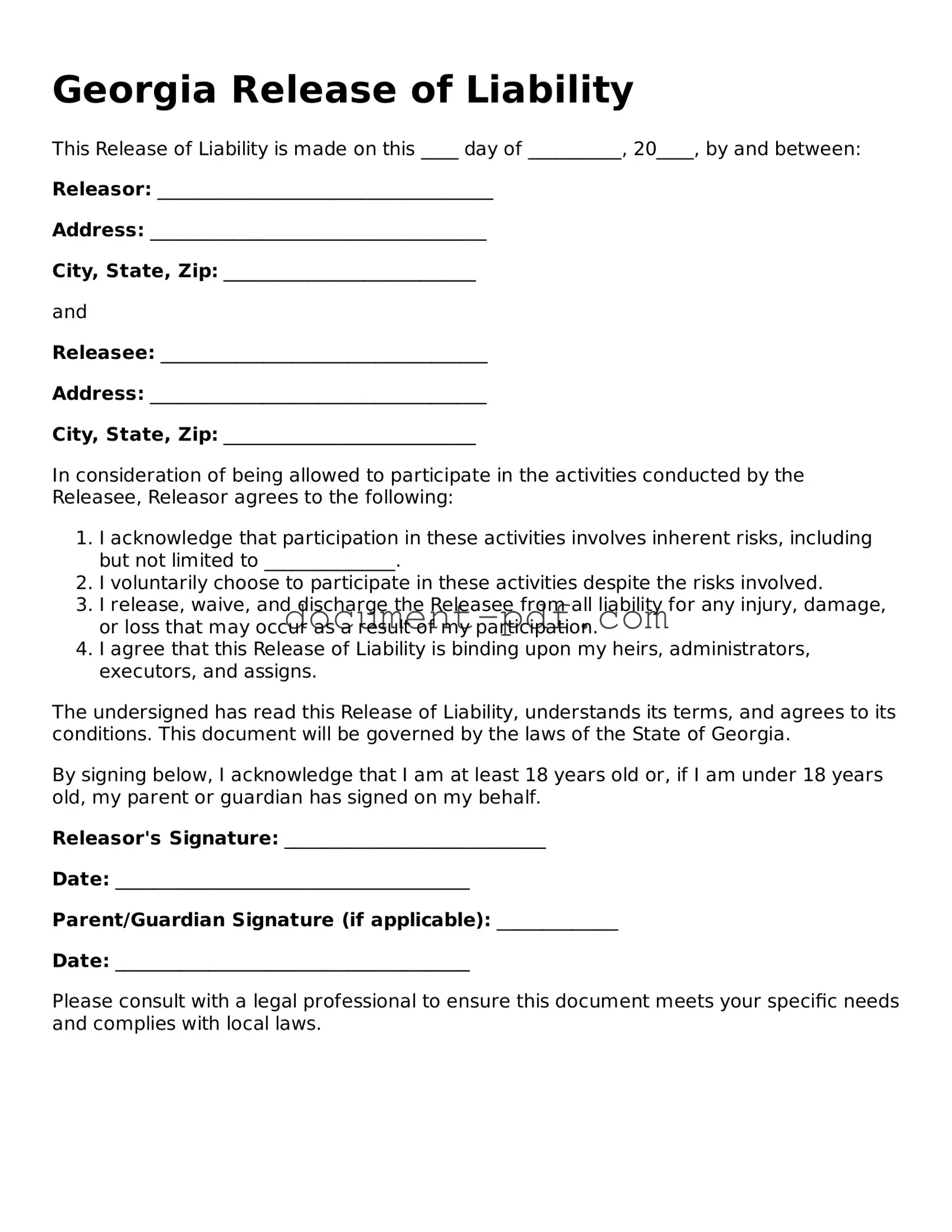Georgia Release of Liability
This Release of Liability is made on this ____ day of __________, 20____, by and between:
Releasor: ____________________________________
Address: ____________________________________
City, State, Zip: ___________________________
and
Releasee: ___________________________________
Address: ____________________________________
City, State, Zip: ___________________________
In consideration of being allowed to participate in the activities conducted by the Releasee, Releasor agrees to the following:
- I acknowledge that participation in these activities involves inherent risks, including but not limited to ______________.
- I voluntarily choose to participate in these activities despite the risks involved.
- I release, waive, and discharge the Releasee from all liability for any injury, damage, or loss that may occur as a result of my participation.
- I agree that this Release of Liability is binding upon my heirs, administrators, executors, and assigns.
The undersigned has read this Release of Liability, understands its terms, and agrees to its conditions. This document will be governed by the laws of the State of Georgia.
By signing below, I acknowledge that I am at least 18 years old or, if I am under 18 years old, my parent or guardian has signed on my behalf.
Releasor's Signature: ____________________________
Date: ______________________________________
Parent/Guardian Signature (if applicable): _____________
Date: ______________________________________
Please consult with a legal professional to ensure this document meets your specific needs and complies with local laws.
